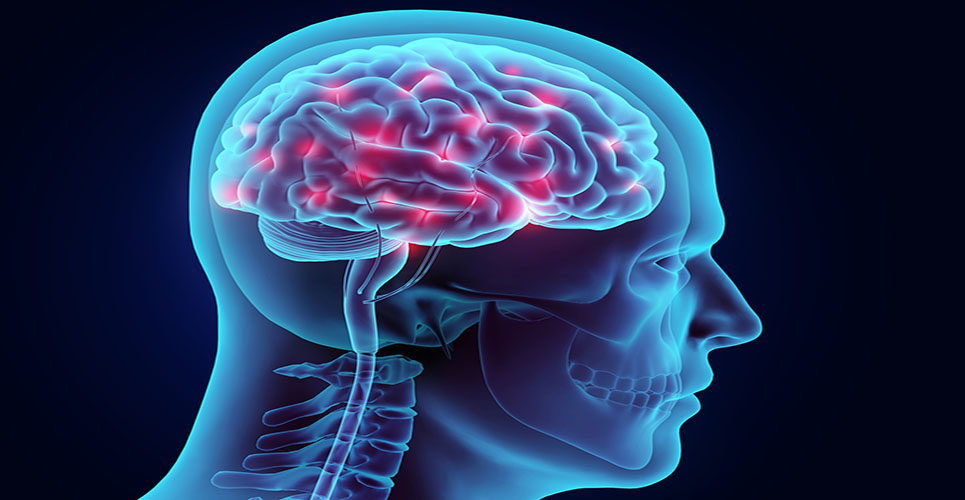teaser
In a great feat of medicine similar to that practiced by Hugh Laurie in his role in House, one of my neurology patients recently became one of my oncology patients. At the same time we finally elucidated the reason for a bizarre collection of symptoms.
A young lady in her late twenties had been admitted to one of our critical care units with a suspected viral encephalitis. But her viral PCRs returned negative, and the symptoms began to look less and less like a conventional encephalitis. The family confirmed that the patient had been behaving oddly prior to bouts of seizures and loss of consciousness. The strange behaviours included staring into the mirror, short-term memory difficulty and confusion. Further tests came back negative – including those for anti-nuclear antibodies, Lyme serology, Whipple’s disease PCR and voltage-gated potassium channel antibodies (VGKC). Some of which were not only new to me but also to our neurologists.
The patient was treated with a variety of antiepileptic medications (AEDs): phenytoin, phenobarbital, sodium valproate, clobazam. The seizures did not improve. The symptoms did not respond to high-dose steroids or intravenous immunoglobulin. Finally, one of our clever neurologists, dimly recalling something from the back of her memory, suggested it might be worth checking for an ovarian teratoma. It turns out that there is a phenomenon where anti-NMDA receptor antibodies can form in response to ovarian teratomas (that express NMDA-receptors) and can then accumulate in the brain. This can lead to a period of acute confusion, followed by movement disorders which resemble seizures, but do not respond to AEDs – in fact, they can be aggravated by certain drugs such as phenytoin – and which finally lead to severely impaired consciousness or lack of consciousness.
We assayed for α-fetoprotein, CA 125, HCG and CEA, and all came back normal or negative. It took repeated MRI and ultrasound to find it, but the diagnosis appeared correct. There was an echogenic ring around the ovary, associated with calcific foci and acoustic shadowing. It all seemed in keeping with our diagnosis. According to the literature, despite the autoimmune aspect of the condition immunotherapy seems to have very little effect, and this did hold true for our patient despite continued high-dose prednisolone. But it seems that oophorectomy followed by plasmaphoresis can turns things around. Unfortunately, the process is not a quick one. It can take many months to make a (hopefully) full recovery. Spontaneous recovery has been reported, but it would appear that oophorectomy will hasten and improve the extent of recovery. One must exercise caution regarding the patient’s wishes for raising a family. Fortunately for our patient, a bilateral oophorectomy was not required.
One of the giveaways, in retrospect, was the severe orofacial dyskinesias displayed by the patient. Most commonly, these occur as a persistent chewing motion with hypersalivation. This is very similar to the toxic effects of other NMDA-receptor antagonists, such as amantadine or ketamine. Or, a quick look through the effects of the illicit drug PCP can give a very good indication of the physiological effects manifested.
I realise this is a bit more scientific than my normal blogs – but it is such an interesting case, I thought you might appreciate being able to read about it. My lesson as a pharmacist for this one has been this: treating the symptoms is one thing, but actually, in trying to control these things, at best we were masking the real problem and at worst we were making things worse. For instance, see Iizuka et al. (2007) below for medicines that can aggravate chorea. I hope others can use this to learn something useful.
Bibliography
Ances BM, et al. Treatment responsive limbic encephalitis identified by neutrophil antibodies: MRI and PET correlates. Brain 2005;125:1764-77.
Barker R. Chorea: diagnosis and management. ACNR 2003;3(4):19-20.
Dalmau J, et al. Paraneoplastic anti-N-methyl-D-aspartate receptor encephalitis associated with ovarian teratoma. Ann Neurology 2007;61:25-36.
Iizuka T et al. Anti-NMDA receptor encephalitis in Japan: long-term outcome without tumour removal. Neurology 2007;69:1-10.
Kataoka H, et al. Paraneoplastic encephalitis associated with ovarian teratoma and N-methyl-D-aspartate receptor antibodies. European Journal of Neurology 2008;15:e5-6.

